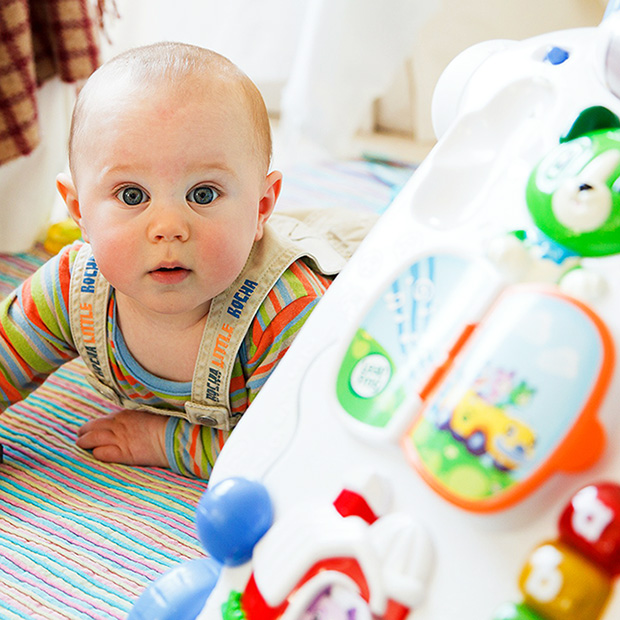Toys And Activities For Vision Development

Just like learning how to walk and talk, your baby also has to learn how to see!
There are many ways you can help them develop their visual skills, from the right types of toys to buy to the right types of games to play with them at certain ages.
The First Six Months
A newborn’s world is filled with blurry shapes, light, and shadows. At first, they can only focus on objects about eight to ten inches from their faces—the distance between their eyes and the face of the person holding them.
As your baby’s sight grows clearer and sharper, here are some things you can do to encourage those developing vision skills:
- Move objects around in front of them, which will help them learn to track things with their eyes.
- Fill their surroundings with color. Babies can get bored if there’s nothing interesting to look at, and you want them looking around as much as possible! They find mobiles hanging over their cribs particularly fascinating (but you still might want to add some variety by changing out the objects every so often).
- Play peek-a-boo! Babies get lots of practice focusing their eyes thanks to that mysterious person or object that keeps vanishing like magic!
6-12 Months
At the age of about six months, your baby will begin developing hand-eye coordination. You’ll want to give them plenty of colorful objects to grab and play with.
Crawling helps babies develop coordination between their eyes and their bodies—even better than walking! They don’t always remember that their heads don’t end at their eyes, though, so they might get a few bumps on their little noggins while they explore!
It’s time to move on from peek-a-boo. Your baby now understands object permanence, which means they no longer think Mommy and Daddy are wizards who can make themselves and objects blink out of existence simply by hiding behind their hands. Instead, you can play hide-and-seek, challenging them to figure out where you hid their toy.
You can also start reading to your child at this age, although it’ll be a few more years before they figure out how that works.
1-3 Years
Your baby is now a toddler! It’s time to step things up again. One-year-olds will further develop their hand-eye coordination by bouncing, throwing, and chasing balls (and probably a few objects not meant for throwing). Visual skills are linked with other important developmental skills, like balance and comprehension. They’ll start putting names to objects, and they’ll love rocking horses and other simple riding toys.
Two-year-olds will discover their artistic talents! Make sure to give them plenty of drawing materials. They’ll also do much more interesting things with blocks than they have so far and interlocking blocks will be particularly fun.
For a clearer picture of what your baby sees at various ages, watch this video:
[iframe https://www.youtube.com/embed/5iNny4Sbdnc?rel=0 620 349]
Infant and Toddler Eye Health
Even if you’re doing everything you can to encourage your child to develop the right visual skills by the typical ages, it’s still important to bring them in for eye exams. Older children can tell you with words when their eyes aren’t functioning properly, but it can be harder to tell there’s a problem with the eyesight of an infant or toddler. Your baby should have his or her first eye exam by six months old!